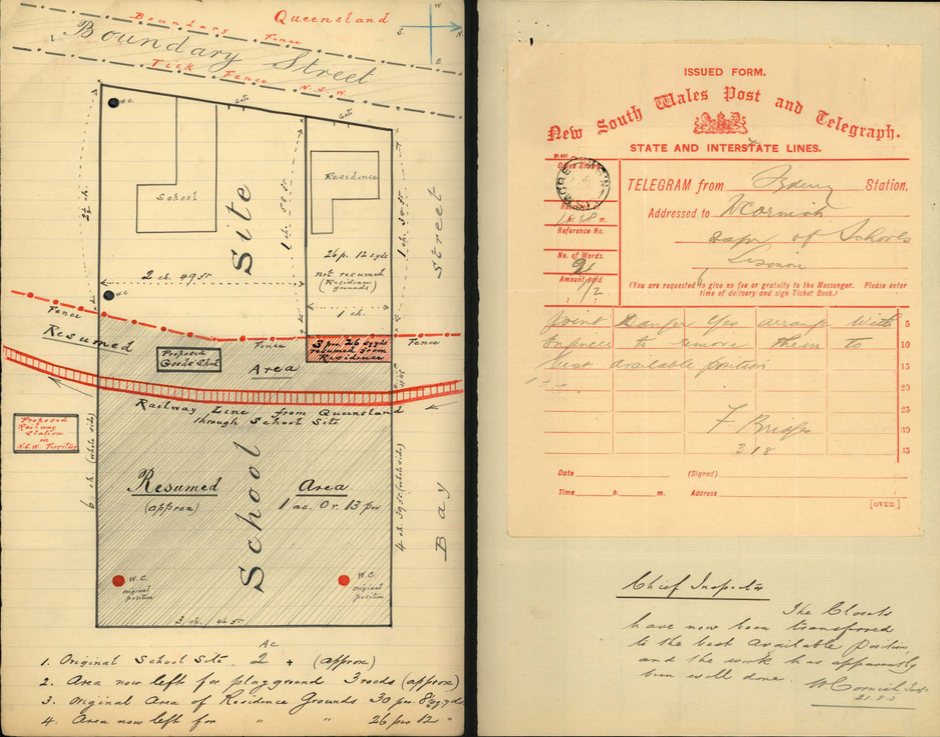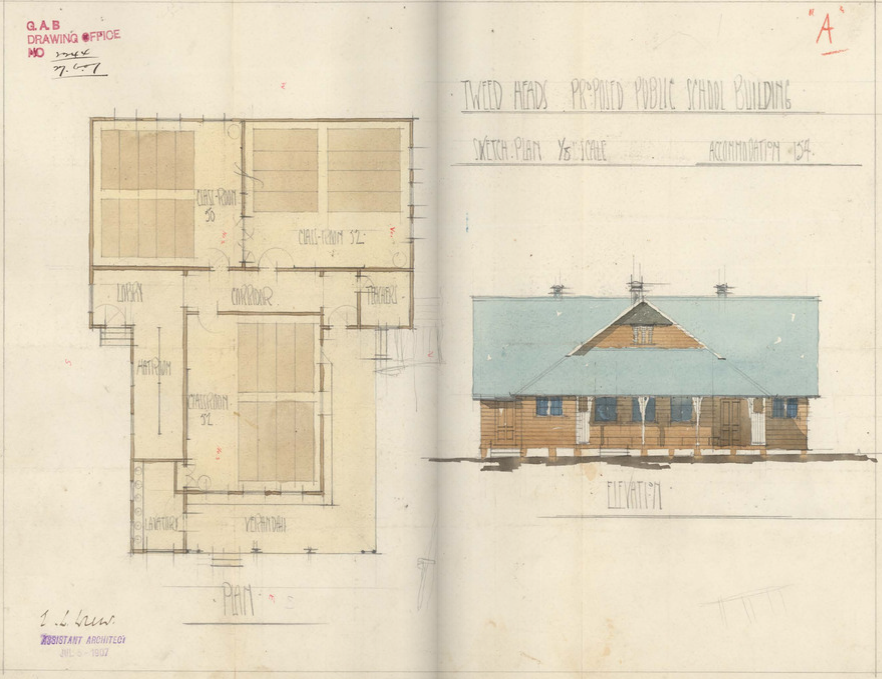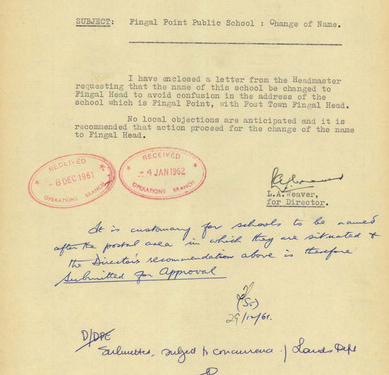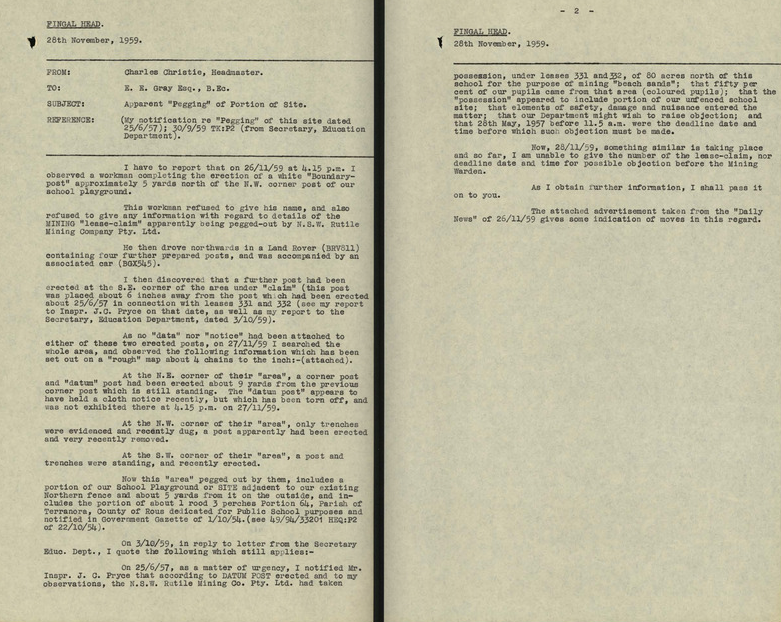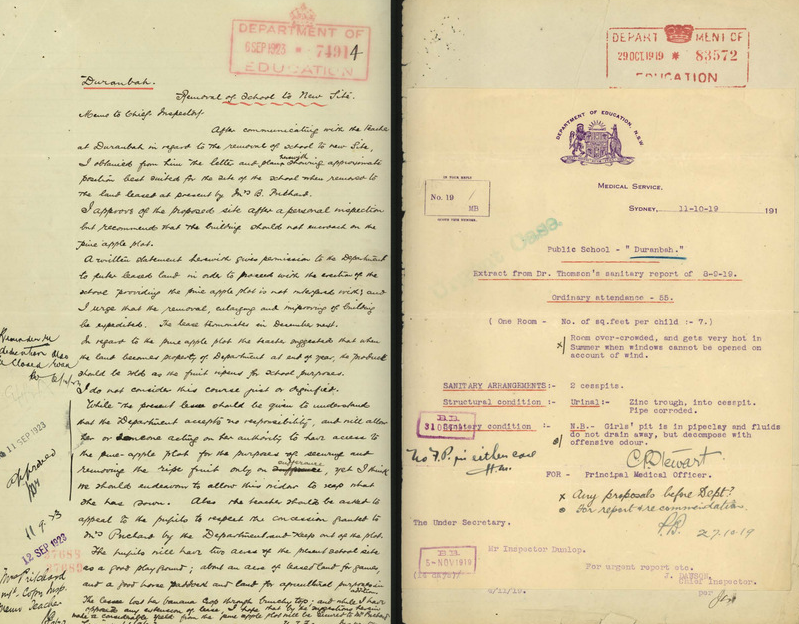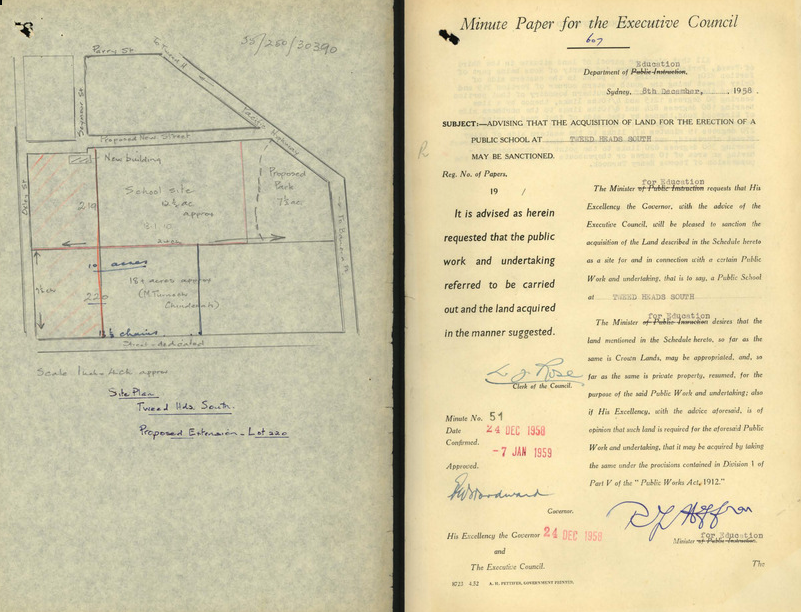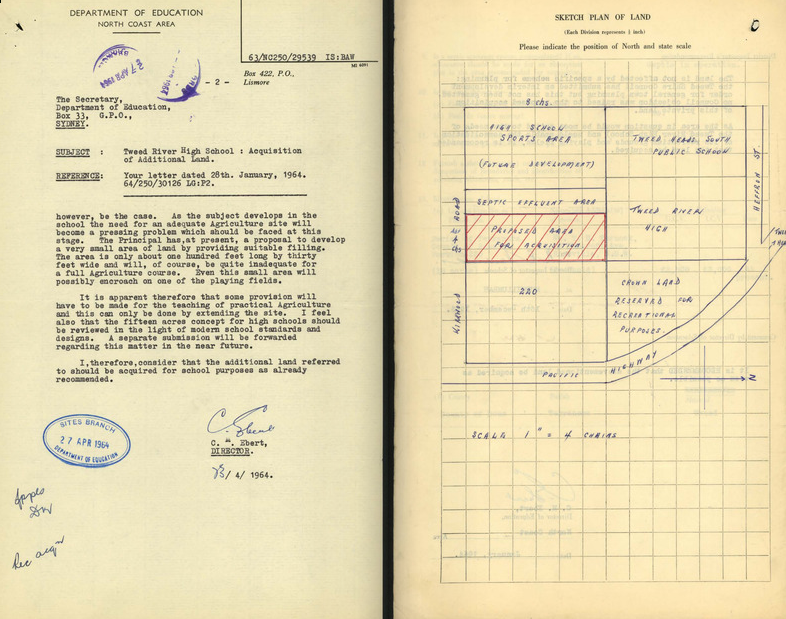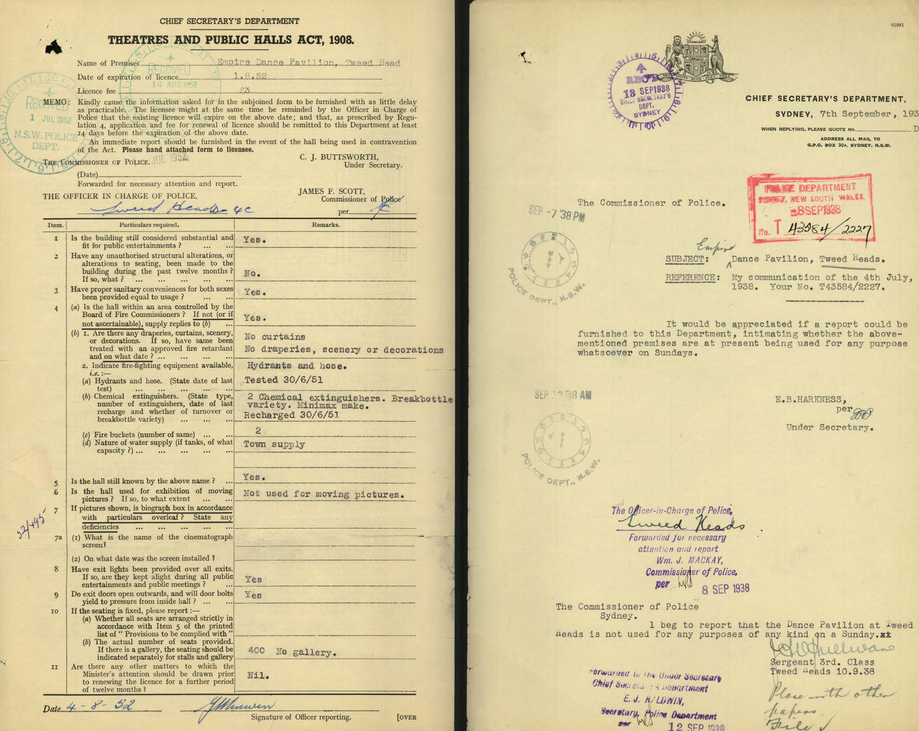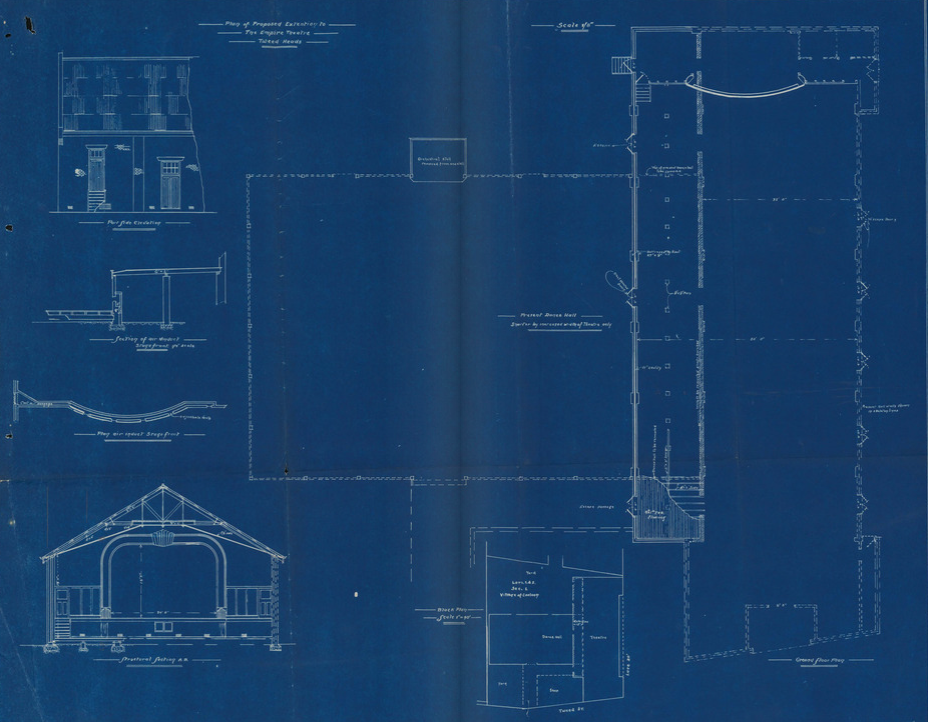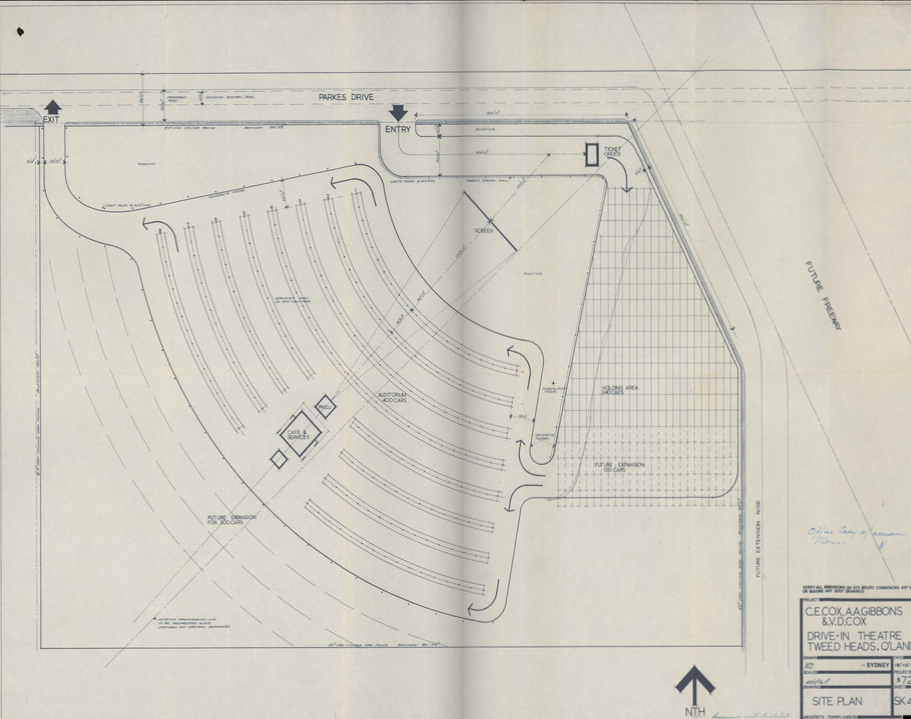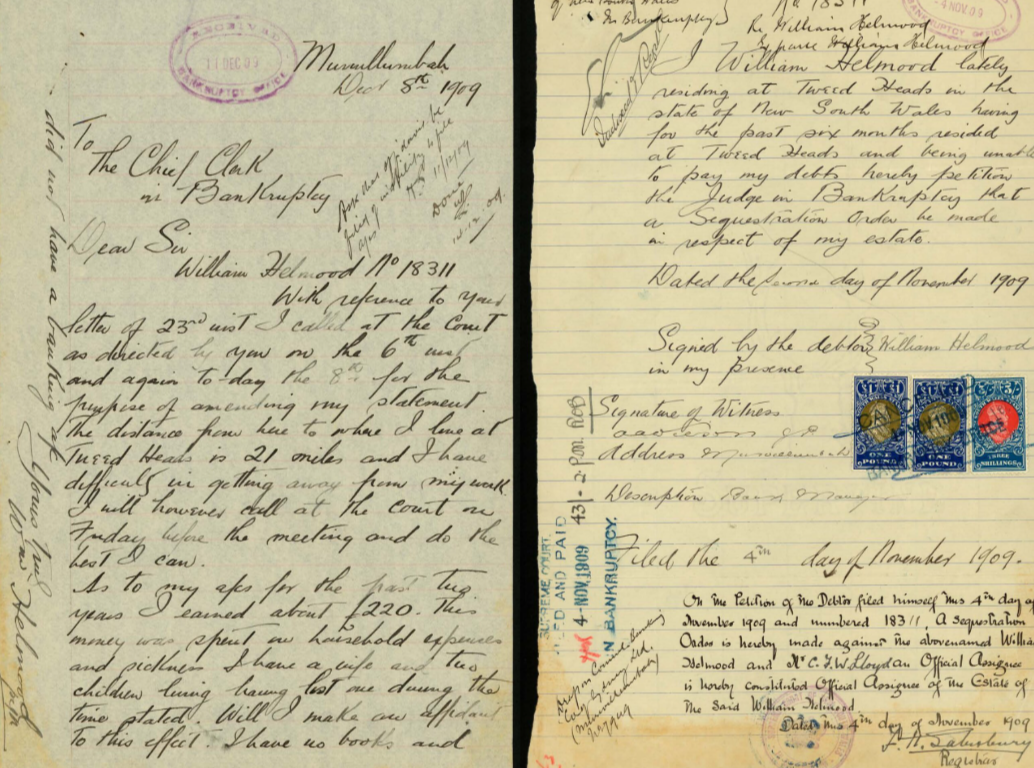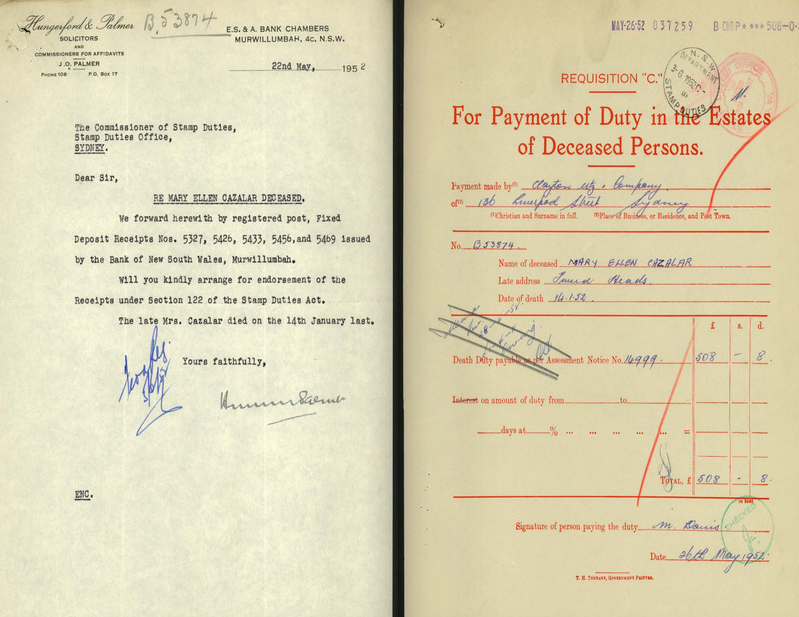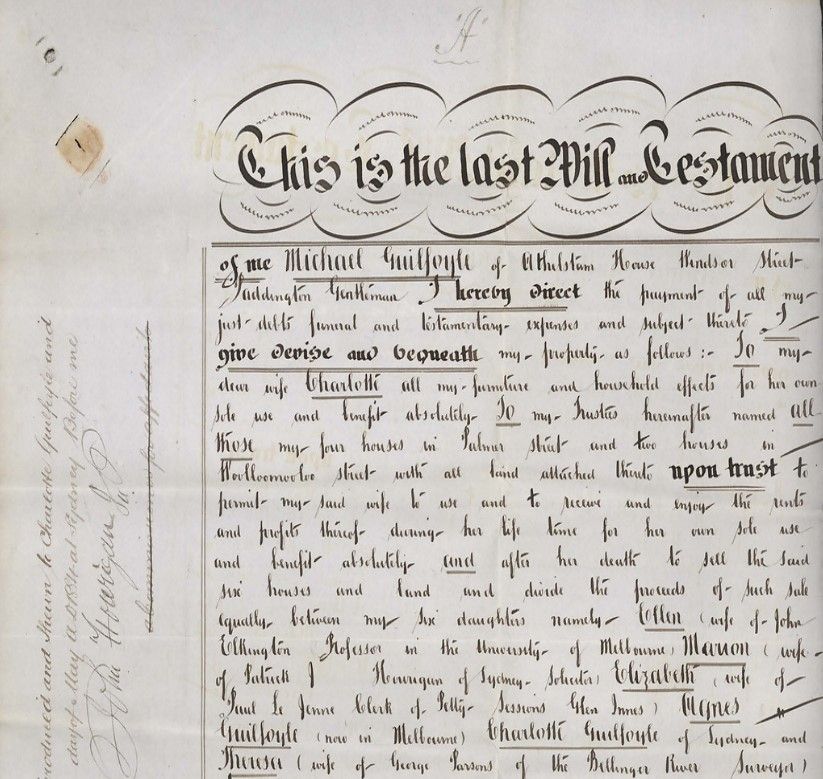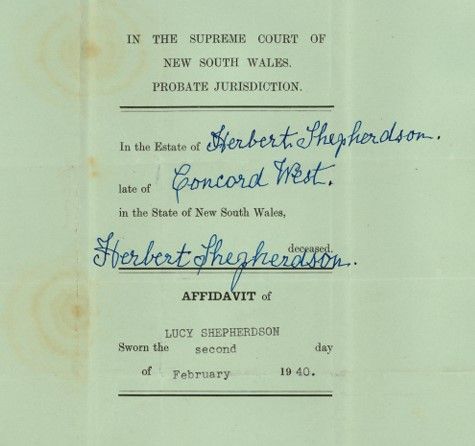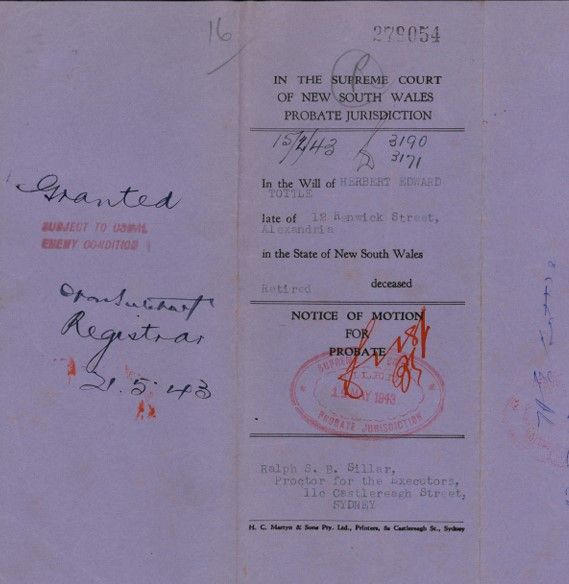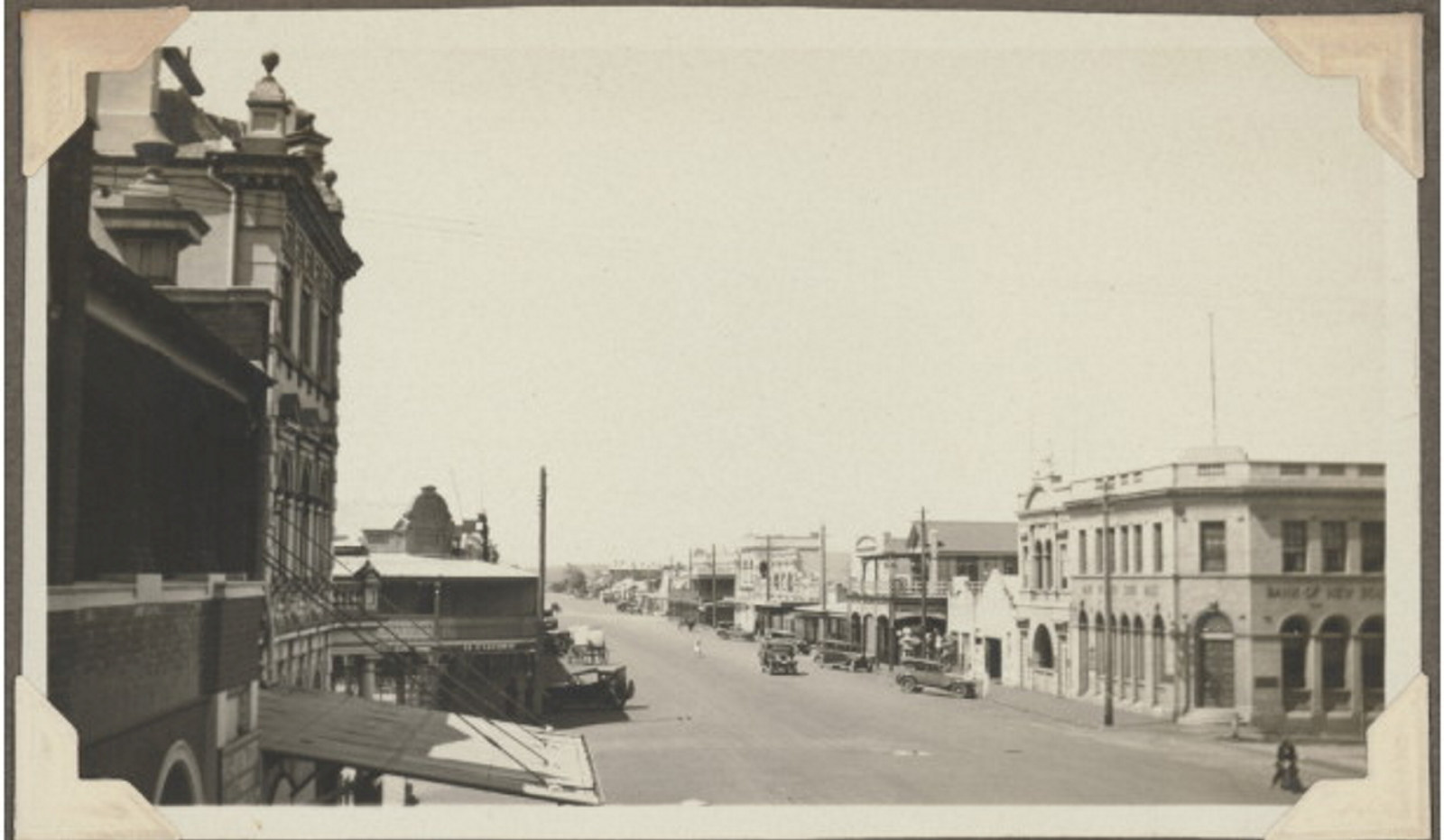Tweed Heads
Explore the NSW town of Tweed Heads through records in the State Archives Collection
As part of our Archives on Tour initiative we conducted a virtual tour of some of the archives that highlight key moments and people from Tweed Head's past. Take a tour of some of the featured archives below.
Watch the recording of the virtual event and come behind the scenes
School Files, 1876-1979
[NRS-3829]
What can these records tell you about your town?
There are similarities between all of the school files through content and purpose. They reflect their times. The files cover both wars but particularly reflect the many impacts of World War 1. Women resign or are terminated when they marry as married women were barred from public sector employment. Schools very strongly reflect the growth or decline of towns.
Tweed Heads’ School files
The School files show the commencement and growth of the government school system from the first Tweed Heads school in 1876 – Point Danger which later became Tweed Heads Public School. Additional public schools opened including Duranbah in 1892, Fingal Head in 1895 and Tweed Heads South in 1958. Tweed Heads Public School offered secondary schooling until Tweed River High School was established in 1961. More public schools and high schools started in the 20th and 21st centuries. The difficulties and advantages created by Tweed Heads’ location on the river show in a range of ways in Tweed Heads School files.
Point Danger started as a provisional school to provide an education for the Pilot and other government employees families. Provisional schools were schools which were established in areas where at least 15 children but fewer than 25 could be expected to attend. Parents had to provide the building and furniture, whilst the Council or the Department of Education paid the teacher and supplied books and equipment. The schools were generally staffed by untrained teachers or by teachers of the lowest classification.
Teachers struggle to find accommodation so sleep in tents and school rooms and write to the Premier in a bid to get a residence, discover part of the school grounds will have railway tracks and a railway station constructed on them, answer searching questions in applications for employment, teach 140 children in rooms designed for 80, teach on verandahs and in converted weather sheds and rented local halls, take leave for diphtheria, apply to have electric light in the school residence, obtain permission to close the school for the local show, measles and the funeral of a local resident, report on school lands being pegged for rutile mining and request changing the school name.
Parents and Citizens groups make representations in support of the schools in numerous matters – more teachers, safer school sites, fencing school grounds and placing a memorial plaque for a headmaster that died.
School children travel to and from school by boat and schools accommodate different start and finish times because of that. School children travel to Murwillumbah for secondary schooling even after it is offered in Tweed Heads.
Extracts from the files
Plans of public buildings
[NRS-4335]
The Colonial Architect started in 1832 and continued on as the Government Architect to the end of the 20th century. The public buildings serve a variety of purposes including Land Board offices; pilot stations and light houses in coastal areas; schools; hospitals; police stations; gaols; court houses; and even post offices from before postal services became a Federal Government responsibility. All of these buildings are often large and enduring even if their purpose changes over time.
Plans of Tweed Heads buildings
Tweed Heads had a long history as part of a river system used for commerce and pleasure. The Tweed Heads Pilot Station operated from 1870. These six plans from 1917 to 1927 show the size and range of buildings from the cottages for the boatmen to housing for the station’s rockets.
Theatres and public halls files, 1895-1992
Theatres and public halls had to be licensed from 1895. The licensing and regulations related to public safety. The theatres and public halls were owned by private individuals, businesses, religious organisations, community groups and councils and they were used for many purposes – dances; social gatherings; showing movies; live entertainment and skating (roller and ice). The files provide information about local businesses – both in relation to theatres and public halls and the construction industry. Theatres and public halls are a large part of recreation in any town. The rise and fall of these buildings chart changes in population and in the broader world of recreation.
Tweed Heads
The adjoining Empire Picture Theatre and Empire Jazz or Dance Pavilion in Tweed Heads both started in the late 1920s. Each had separate licences and at times different licensees. The licensees were inventive – enquiries were made about allowing people to skate in the Dance Pavilion free of charge on Sundays in the 1930s and to swap between restaurant and dance hall in the 1950s. Neither were approved. In 1959 movies were shown six nights a week but by 1961 the premises had not been used for nearly two years.
The Twin Towns Drive-In Theatre started development in 1969 with community concerns about traffic. The screen was installed in 1971 and movies were shown seven nights a week.
Extracts from the files
Bankruptcy, 1888-1929
Bankruptcy is a state in which a person is unable to pay creditors and is required to undergo a legal process that usually results in liquidation of his/her estate in order to meet expenses (at least in part). If a person is declared to be a bankrupt then he/she cannot operate a business for profit, enter a business contract or borrow money. It is similar, but not identical to insolvency.
There are Insolvency files from 1842 to 1887 and from 1930 bankruptcy became a Federal government matter.
Bankruptcy files contain lists of creditors that the bankrupt person owed money to and debtors that owed money to the bankrupt person. Through these lists they show commercial connections in a town, between towns and with Sydney. The bankrupt person provides a statement about why they became bankrupt often providing a picture of what is happening in the town and beyond. The files of bankrupt people in the town collectively show what sorts of businesses where operating.
Records of a Tweed Heads Resident
William Helmood was a fireman and engine driver but was out of work at the time of his bankruptcy. His wife was ill and had been treated by the doctor for two and a half years "off and on". They had two children and had lost one child during that time. His income over the previous three years was 320 pounds and his expenditure 400 pounds. His creditors were butchers, bakers, storekeepers, nurses, doctors and a land holder. The total owing was 76 pounds.
Deceased estate files, 1880-1958
The Stamp Duties Office created a deceased estate file for every individual who died leaving property or other assets ('estates'), which were subject to death duties. The files contain the papers, correspondence and other documentation relating to the assessment of death duty by the Stamp Duties Office. They are a financial record of the person’s estate when they die and frequently have very detailed information about a person’s possessions.
There are Deceased estate files for people from all walks of life, men and women, all ages and financial positions.
Records of Tweed Heads Residents
These Deceased estate files from the first half if the 20th century are typical of people of their time and their roles. All also have Probate packets.
William McLean Scholes like many of his contemporaries enlisted in the Australian Imperial Force and served in World War 1. He died and was buried in France. His estate was worth 270 pounds.
Francis Scaling Lowes, a freeholder in Tweed Heads died in 1941 aged 74. Frank Lowes had been an engineer and captain in the steamer service between Tweed Heads and Murwillumbah for many years. He had other business interests and was a well-known member of the community.
Frank Lowes estate was worth over 11,000 pounds including over 9,000 of real estate. He owned the Empire Picture Theatre and Empire Dance Pavilion in Tweed Heads when he died. Further assets and liabilities were located after his estate was settled so the amount of death duty payable was adjusted in 1944 and 1950. Death duty paid was over 600 pounds.
Mary Ellen Cazalar, a widow living in Tweed Heads died in 1952 aged 91. One of her daughters signed the affidavit. Mary Cazalar’s estate was worth over 9,000 pounds. The estate was made up of a house in Boyd Street Tweed Heads and five interest bearing deposits which were the bulk of the estate.
Probate packets, 1817-1976 and part 1989
A grant of probate is the authority given by the Supreme Court of NSW to the executor(s) to deal with a deceased person's estate. Probate packets hold the last will and testament, codicils (additions or revocations to the will) or letters of administration.
Other documents include an inventory of assets of the estate; affidavits of death and papers produced by the executor.
Not everyone has a probate packet. Depending on the type, size and value of the assets located in New South Wales it may not be necessary to obtain a grant of probate in New South Wales. There is no statutory requirement to obtain probate in every case.
Records of Tweed Heads residents
These Probate packets from the 1880s and the 1940s are typical of people of their time and their roles while also being special because of who they are.
Michael Guilfoyle came to New South Wales in 1849 and forged a successful career as a landscape gardener. He and his family were also pioneers in the sugar cane industry in the Tweed area at Cudgen.
Michael Guilfoyle died in 1884 aged 74. Michael Guilfoyle owned considerable real estate – six houses in inner Sydney, an allotment at Waverley, over 100 acres at Cordeaux River and nearly 1,000 at Cudgen. His estate was worth 8,587 pounds.
Herbert Shepherdson and Herbert Edward Tottle
These men were boatmen at the Tweed Heads Pilot Station. They are named on the plans for the Boatmen’s cottages. Both men’s estates demonstrate the links between the Tweed Heads area and Queensland.
Herbert Shepherdson died in 1939 at Concord West without having made a will. Herbert Shepherdson was a boatman at the Pilot Station on the Tweed River from 1890 into the 1920s. He is described on his probate packet as a Retired boatman.
Herbert Shepherdson’s estate was worth 178 pounds including land in Terranora Terrace South Cooloon and bonds in Queensland Forests.
Herbert Edward Tottle died in 1943 at Manly. Herbert Edward Tottle was a boatman at the Pilot Station on the Tweed River from 1912 into the 1920s.
Herbert Edward Tottle’s estate was worth 3,170 pounds including land in Alexandria and savings. He wrote his very detailed will in 1933 leaving money to relatives in England.
59:08
3:48
1:55
3:31
4:40
2:53
2:29
Published on
Archives on tour

Coonabarabran school records
Explore the town of Coonabarabran through the school records in the State Archives Collection

Ulladulla school records
Explore the town of Ulladulla through the school records in the State Archives Collection
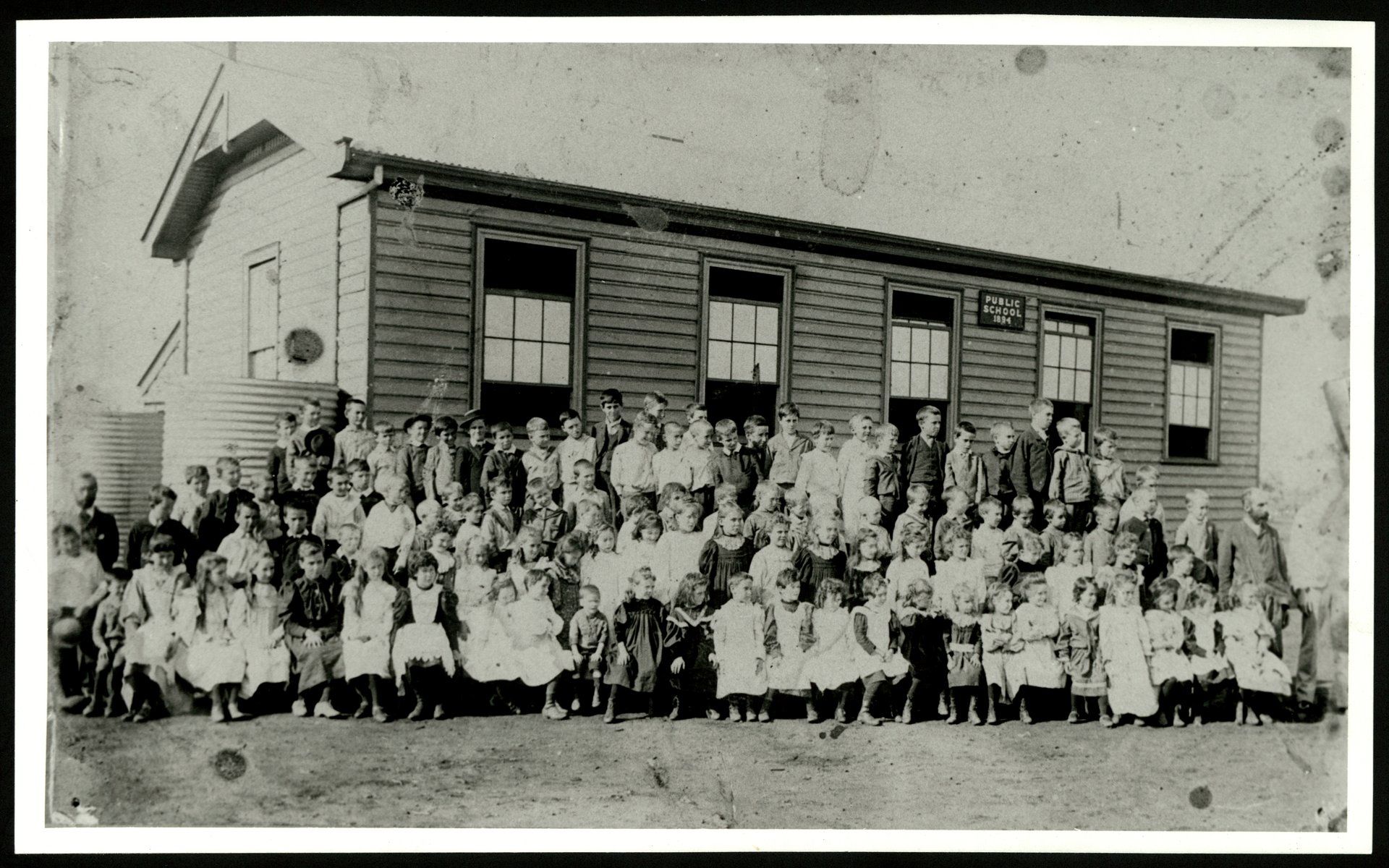
West Wyalong school records
Explore the town of West Wyalong through the school records in the State Archives Collection
